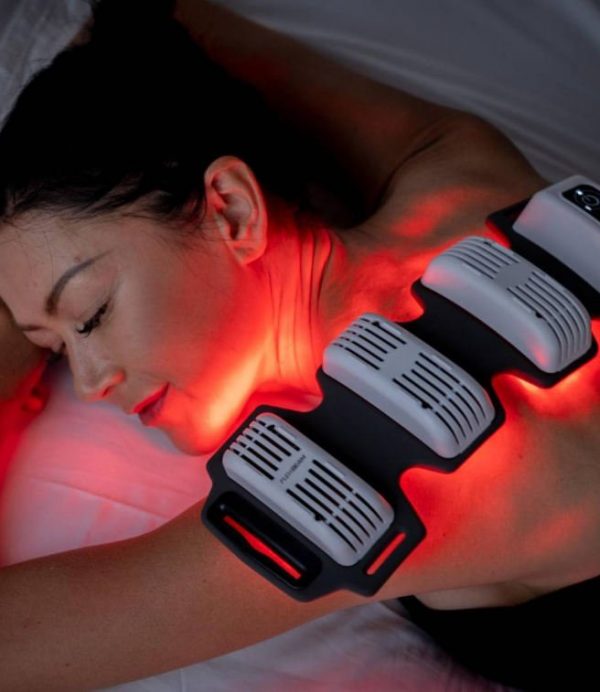Red Light Therapy for Pain Management
Say Goodbye to Medications!
Is Red Light: Nature’s Pain Killer?
Pain is an inevitable part of life, but there are many methods to manage it. One of the most effective and growing trends in pain management is red light therapy, also known as photobiomodulation. Red light therapy has been clinically proven to reduce pain, and inflammation and accelerate healing in the body. It is a natural, non-invasive, drug-free treatment with no reported side effects.
Discover How to Reduce Pain
Red light therapy is a noninvasive procedure that utilizes low-level red wavelengths for healing pain relief. This therapy has been around for decades but has recently become more popular due to its benefits in treating various conditions such as arthritis, fibromyalgia, and back pain. The treatment works by stimulating the body’s natural ability to heal itself at a cellular level.
One of the key benefits of red light therapy is its ability to reduce pain. The treatment has been proven effective in treating both acute and chronic pain. In fact, studies have shown that red light therapy can reduce inflammation and swelling, which are two major contributors to pain. By increasing blood flow and circulation, red light therapy helps bring oxygen and nutrients to damaged tissues, aiding in the healing process.
Red light therapy also provides an alternative for those who prefer not to use medication or undergo surgery for their pain management needs.

How Does it Work?
The treatment works by penetrating deep into the skin’s tissues, stimulating the production of energy-rich molecules called ATP. This increase in ATP promotes cellular activity, which accelerates tissue repair and reduces inflammation. Additionally, red light therapy also triggers the release of endorphins – your body’s natural pain-relievers – further reducing discomfort.
During a session with a red light therapy device, patients are exposed to a specific wavelength of light for several minutes. The device can be adjusted according to the patient’s condition or injury location. There may be a case where multiple sessions are required for the best results.
Clinical Studies
Red Light Therapy has emerged as a promising option for those looking to reduce pain without resorting to medication or surgery. Clinical studies have shown that this non-invasive treatment can help alleviate chronic pain by stimulating the body’s natural healing mechanisms. By exposing the affected area to red light, cells are prompted to produce more ATP, which is essential for cellular energy and repair.
One of the most notable studies on red light therapy was conducted in 2013, when researchers found that patients with knee osteoarthritis experienced significant pain reduction after eight weeks of treatment. Another study from 2012 showed similar results in patients with carpal tunnel syndrome. These findings suggest that red light therapy may be effective for a wide range of conditions, including fibromyalgia, lower back pain, and neuropathic pain.

Side Effects
Red light therapy is a popular treatment for reducing pain and inflammation. It uses low-level wavelengths of red light to stimulate the body’s natural healing processes. Studies have shown that red light therapy can reduce pain related to disorders such as arthritis, back pain, and fibromyalgia.
However, like any medical treatment, red light therapy can have side effects. Some people may experience mild discomfort or irritation during or after treatment. This is typically temporary and should resolve in a day or two. Other possible side effects include headaches, dizziness, or nausea. If you experience these symptoms after receiving red light therapy, it’s important to speak with your healthcare provider right away.
Despite these potential side effects, many people find that red light therapy is a safe and effective way to reduce pain without the use of medications or invasive procedures.
Combining Treatments
Combining treatments of red light therapy for reducing pain can have significant benefits for those who suffer from chronic discomfort. Red light therapy has been shown to reduce inflammation, promote tissue repair, and stimulate the production of collagen, which is essential for healthy skin and joints. By combining red light therapy with other forms of pain management, patients may experience greater relief than they would with either treatment alone.

One popular combination involves using red light therapy in conjunction with massage or acupuncture. These therapies work by releasing tension in the muscles and increasing blood flow to the affected area. When used together with red light therapy, this can lead to a reduction in pain and an improvement in overall mobility. Additionally, combining these treatments can help speed up the healing process and prevent future injuries.
Another effective combination is using red light therapy alongside physical therapy exercises.
Ultimately, red light therapy has become a popular alternative for people looking to manage their pain without medication. This comprehensive study shows that red light therapy is an effective treatment option for managing pain, inflammation, and promoting tissue healing. It is safe, cost-effective, and easy to use with minimal side effects and no risk of addiction. Additionally, the availability of home treatments makes it more accessible than ever before.